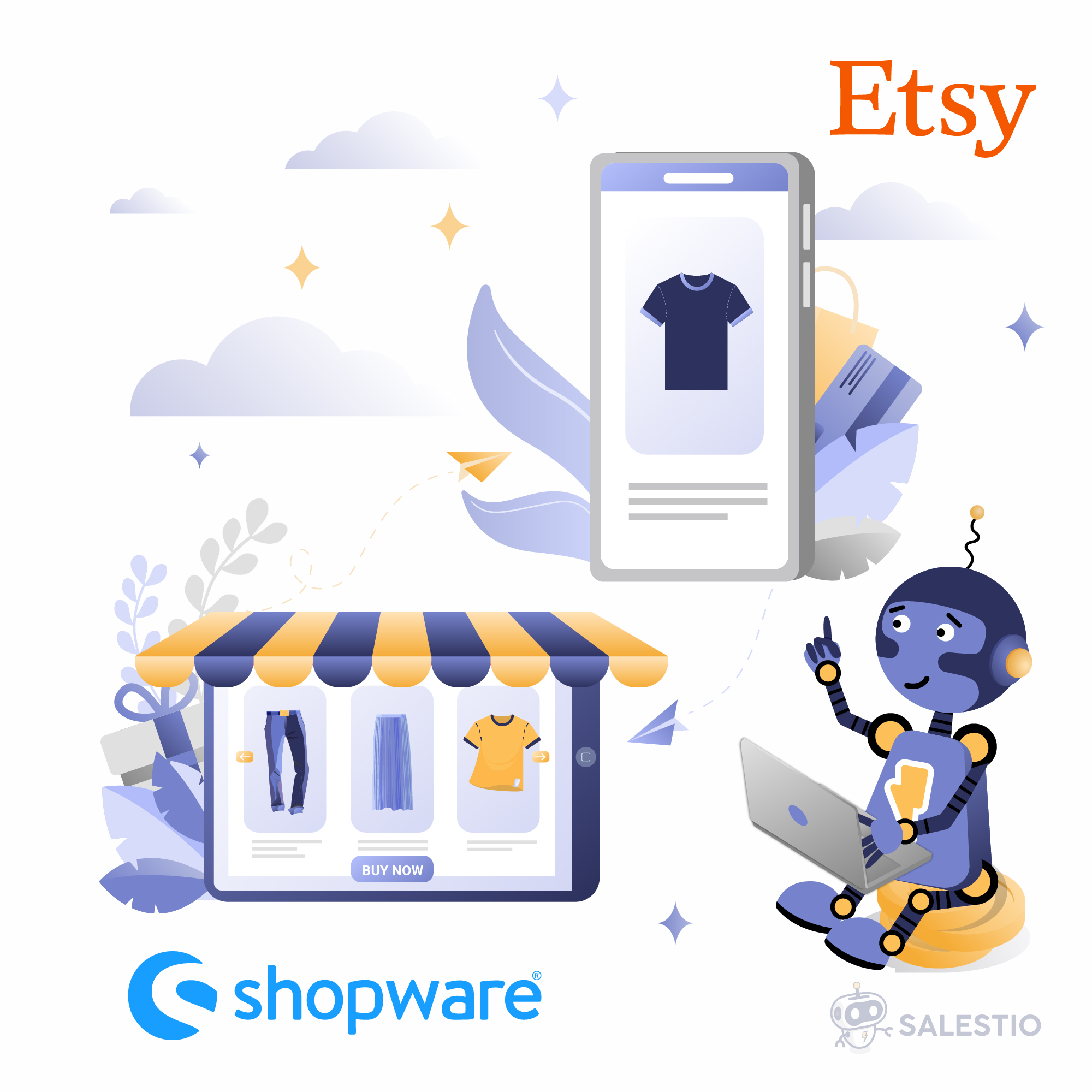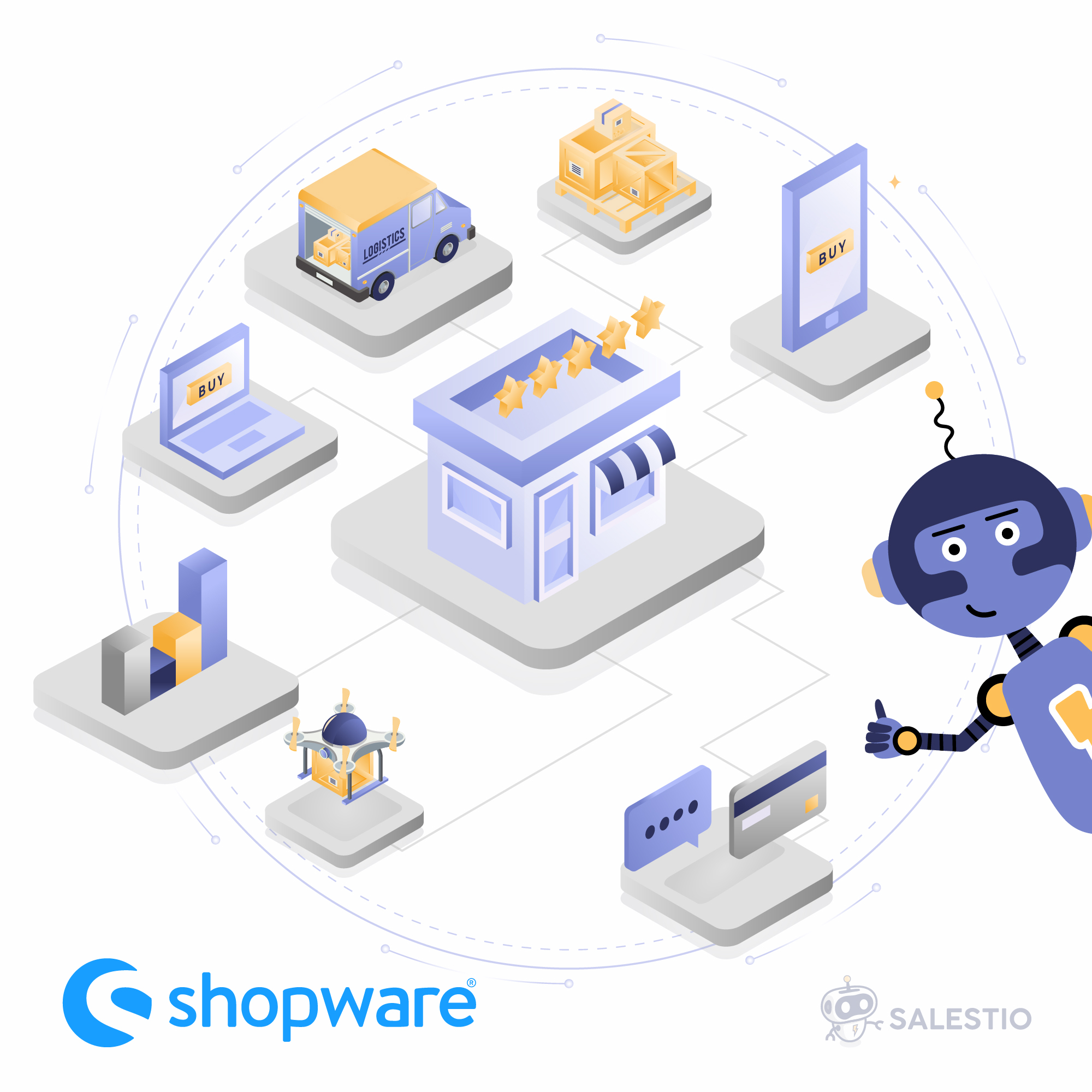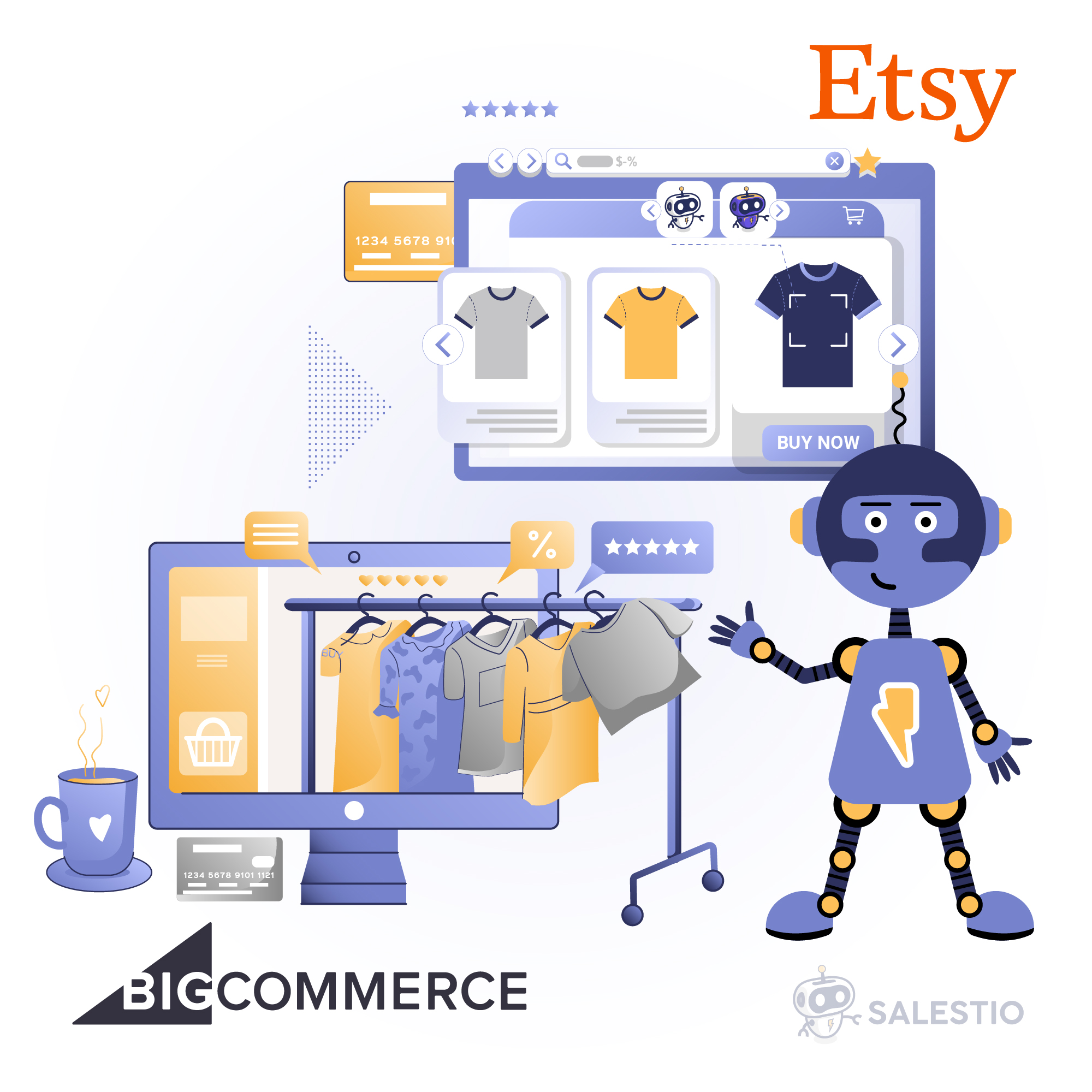08 Dec'22

The e-commerce industry is constantly evolving and being shaped by new technologies and innovations. From artificial intelligence (AI) to augmented reality (AR), these technologies are changing the way consumers shop online and how businesses operate in the digital space. In this article, we will take a closer look at some of the latest technologies that are driving the e-commerce industry forward and how they are shaping the future of online shopping.
Artificial Intelligence (AI)
Artificial intelligence (AI) is perhaps the most significant technology driving the e-commerce industry forward. AI-powered tools and services are helping businesses improve their operations and provide better experiences for their customers. For example, AI-powered chatbots can handle customer service inquiries, allowing businesses to provide 24/7 support without the need for a large team of human agents. This not only saves businesses time and money, but it can also improve customer satisfaction by providing timely and accurate responses to customer questions and concerns.
AI can also be used to personalize the shopping experience, by recommending products based on a customer’s browsing and purchasing history. This type of personalized marketing has been shown to be effective in increasing customer engagement and sales. By using AI to analyze customer data and behavior, businesses can provide more relevant and targeted recommendations, which can help drive sales and customer loyalty.
Another area where AI is being used in e-commerce is in the optimization of product listings and search results. AI-powered algorithms can help businesses rank their products higher in search results, making them more visible to potential customers. This can be especially useful for businesses with large product catalogs, as it can help them stand out from the competition and increase their visibility on online marketplaces.

AI is also being used to improve fraud detection and prevention in the e-commerce industry. By analyzing customer data and transactions, AI-powered systems can identify patterns and anomalies that may indicate fraudulent activity. This can help businesses protect themselves and their customers from online scams and fraud, which can have serious financial and reputational consequences.
Overall, the use of AI in e-commerce is expected to continue to grow, as businesses increasingly turn to this technology to improve their operations and customer experiences. As AI becomes more advanced and accessible, it is likely that we will see even more creative and innovative uses of this technology in the e-commerce industry.
Augmented Reality (AR)
Augmented reality (AR) is another technology that is starting to make waves in the e-commerce industry. AR allows customers to visualize products in their own space, using their smartphones or other devices. This can be especially helpful for customers who are unsure about the size, color, or style of a product. For example, a customer can use AR to see how a piece of furniture would look in their living room, or how a piece of clothing would fit on their body. This can help reduce the number of returns and refunds, as customers are more likely to be satisfied with their purchases if they have a better idea of what they are buying.
AR can also be used to create immersive and engaging shopping experiences, by allowing customers to virtually try on clothes, makeup, or accessories. This can be especially beneficial for fashion and beauty businesses, as customers can experiment with different styles and looks without having to physically visit a store. This can also help customers make more informed and confident purchase decisions, as they can see how a product looks and feels on them before they buy.
In addition to improving the customer experience, AR can also help businesses save time and money. For example, AR can be used to provide virtual product demonstrations, allowing customers to learn about a product without the need for a live salesperson. This can help reduce the need for in-store staff, as customers can get the information they need on their own. AR can also be used to streamline the supply chain and logistics, by providing real-time information about inventory levels and product availability.

Another area where AR is being used in e-commerce is in the creation of virtual storefronts. With AR, businesses can create virtual versions of their physical stores, allowing customers to shop from the comfort of their own homes. This can be especially useful for businesses that are located in remote or inaccessible areas, or for those that are unable to afford the cost of a physical storefront. With AR, businesses can reach a wider audience and provide customers with a more convenient shopping experience.
Overall, the use of AR in e-commerce is still in its early stages, but it is expected to grow rapidly in the coming years. As technology becomes more accessible and affordable, we can expect to see more businesses incorporating AR into their online shopping experiences. This will not only benefit customers but will also help businesses stay competitive in an increasingly crowded and competitive market.
Voice-Based Shopping
Voice-based shopping is another growing trend in e-commerce. With the proliferation of smart speakers and other voice-activated devices, more and more consumers are using their voices to search for products and make purchases online. This trend is being driven by the increasing use of voice assistants, such as Amazon’s Alexa and Google Assistant, which are becoming more popular among consumers.
Voice-based shopping can be especially convenient for busy consumers who want to shop while on the go, or for those who prefer a more natural and intuitive way to interact with technology. For example, a customer can use their voice to search for a product, add it to their shopping cart, and complete the purchase, all without having to use a keyboard or touch screen. This can save time and effort, and make the shopping experience more enjoyable for customers.
Another advantage of voice-based shopping is that it can help businesses reach a wider audience. For example, voice-based shopping can be accessed by customers with disabilities or mobility issues, who may find it difficult to use traditional online shopping interfaces. By providing a voice-based option, businesses can make their products and services more accessible to these customers.
Despite the advantages of voice-based shopping, there are also some challenges and limitations to this technology. For example, voice-based shopping relies on natural language processing, which can be difficult for computers to understand. This can lead to misunderstandings or incorrect results, which can frustrate customers and damage a business’s reputation. In addition, voice-based shopping is still in its early stages, and many customers may be unsure or hesitant about using this technology.
Overall, voice-based shopping is a growing trend in e-commerce, and it is expected to become more popular and widespread in the coming years. As the technology improves and more customers become familiar with it, we can expect to see more businesses offering voice-based shopping options and integrating this technology into their operations.
Mobile Payments
Mobile payments are becoming increasingly popular among consumers, as they offer a quick and convenient way to make purchases on the go. With the widespread adoption of smartphones and other mobile devices, more and more businesses are now offering mobile payment options, such as Apple Pay and Google Wallet. This trend is being driven by the growing use of mobile devices for online shopping, as well as the increasing popularity of mobile payment apps and services.
One advantage of mobile payments is that they are more secure than traditional payment methods, such as credit cards or cash. Mobile payment systems use advanced encryption and security protocols to protect customer data and prevent fraud. This can help build trust and confidence among customers, and reduce the risk of financial losses for businesses.
Another advantage of mobile payments is that they are faster and more convenient than other payment methods. With mobile payments, customers can complete transactions in just a few seconds, without the need to enter their personal or financial information. This can save time and effort for both customers and businesses, and make the shopping experience more enjoyable for everyone.

In addition to the benefits for customers and businesses, mobile payments can also help drive economic growth and financial inclusion. By providing a more convenient and accessible way to make payments, mobile payments can help reduce the use of cash, which is associated with high transaction costs and other disadvantages. This can help increase financial inclusion, especially in developing countries where access to traditional financial services is limited.
Despite the advantages of mobile payments, there are also some challenges and limitations to this technology. For example, not all customers have access to mobile payment systems, especially in areas with low rates of smartphone ownership or internet connectivity. In addition, mobile payments are still relatively new, and many customers may be unsure or hesitant about using this technology.
Overall, the use of mobile payments is expected to continue to grow, as more businesses and consumers adopt this technology. As mobile payments become more widespread and accepted, we can expect to see more innovation and development in this area, including the introduction of new mobile payment apps and services. This will not only benefit customers and businesses, but it will also help drive economic growth and financial inclusion.
Blockchain
Blockchain technology is also starting to have an impact on the e-commerce industry. Blockchain allows for secure and transparent transactions, which can help build trust and confidence among customers. This technology uses a decentralized network of computers to record and verify transactions, which makes it virtually impossible for someone to alter or tamper with the data. This can help prevent fraud and other types of financial crime, which can have serious consequences for businesses and customers.
Some e-commerce businesses are using blockchain to create decentralized marketplaces, where buyers and sellers can interact directly without the need for intermediaries. This can help reduce fees and improve the overall shopping experience for customers. For example, a decentralized marketplace can eliminate the need for third-party payment processors, which can reduce transaction costs and provide customers with more control over their finances.
In addition to improving security and trust, blockchain can also help businesses reduce costs and improve efficiency. For example, blockchain can be used to automate and streamline various aspects of the supply chain, such as tracking and tracing products, verifying contracts, and managing inventory. This can help businesses save time and money, and provide customers with more accurate and up-to-date information about their orders.
Another potential use of blockchain in e-commerce is in the creation of digital currencies and tokens. Digital currencies, such as Bitcoin and Ethereum, can be used as a means of payment on e-commerce platforms, providing customers with an alternative to traditional payment methods. Digital tokens, on the other hand, can be used to represent ownership or rights in a product or service and can be traded on digital exchanges. This can provide businesses with new ways to monetize their products and services and can open up new opportunities for customers to invest and earn returns.
Despite the potential benefits of blockchain in e-commerce, there are also some challenges and limitations to this technology. For example, blockchain is still relatively new and untested, and it may not be suitable for all types of businesses or products. In addition, blockchain requires a high level of technical expertise and resources, which may not be available or affordable for all businesses.
Overall, the use of blockchain in e-commerce is still in its early stages, but it is expected to grow rapidly in the coming years. As more businesses and consumers become familiar with this technology, we can expect to see more creative and innovative uses of blockchain in the e-commerce industry. This will not only benefit businesses and customers, but it will also help drive innovation and progress in the e-commerce industry. By providing a secure and transparent way to conduct transactions, blockchain can help create a more trustworthy and efficient online marketplace, where businesses and customers can interact with confidence and ease. This will not only benefit the e-commerce industry, but it will also have broader implications for the global economy and society.
Conclusion
The e-commerce industry is being transformed by a range of new technologies, including artificial intelligence (AI), augmented reality (AR), voice-based shopping, mobile payments, and blockchain. These technologies are changing the way consumers shop online and how businesses operate in the digital space.
AI is being used to improve customer service, personalize the shopping experience, optimize product listings, and detect fraud. AR is allowing customers to visualize products in their own space and create immersive shopping experiences. Voice-based shopping is making online shopping more convenient and accessible. Mobile payments are providing a faster and more secure way to make purchases. Blockchain is providing a secure and transparent way to conduct transactions and create decentralized marketplaces.
Analyzing modern trends in e-commerce, we should not forget about the classic ways of selling on the online marketplace. And if you want to easily manage your listings and orders on Amazon and eBay, check out Salestio, the app that offers an integrated solution for eCommerce platforms. Salestio supports e-commerce platforms like Shopify, PrestaShop, Bigcommerce, Shopware, and online marketplaces – Ebay, Amazon, and Etsy.
In summary, these cutting-edge technologies are propelling the e-commerce sector forward and shaping the future of online shopping. As they continue to evolve and become more widespread, we can expect to see even more imaginative and revolutionary applications of these technologies in the e-commerce world. This will not only be advantageous for businesses and consumers, but it will also fuel innovation and advancement in the digital economy.





